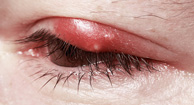Structure of chinese culture

Main article: Social structure of China
Since the Three Sovereigns and Five Emperors period, some form of Chinese monarch has been the main ruler above all. Different periods of history have different names for the various positions within society. Conceptually each imperial or feudal period is similar, with the government and military officials ranking high in the hierarchy, and the rest of the population under regular Chinese law.[7] From the late Zhou Dynasty (1046–256 BCE) onwards, traditional Chinese society was organized into a hierarchic system of socio-economic classes known as the four occupations.
However, this system did not cover all social groups while the distinctions between all groups became blurred ever since the commercialization of Chinese culture in the Song Dynasty (960–1279 CE). Ancient Chinese education also has a long history; ever since the Sui Dynasty (581–618 CE) educated candidates prepared for the Imperial examinations which drafted exam graduates into government as scholar-bureaucrats.
This led to the creation of a meritocracy, although success was available only to males who could afford test preparation. Imperial examinations required applicants to write essays and demonstrate mastery of the Confucian classics. Those who passed the highest level of the exam became elite scholar-officials known as jinshi, a highly esteemed socio-economic position. A major mythological structure developed around the topic of the mythology of the imperial exams. Trades and crafts were usually taught by a shifu. The female historian Ban Zhao wrote the Lessons for Women in the Han Dynasty and outlined the four virtues women must abide to, while scholars such as Zhu Xi and Cheng Yi would expand upon this. Chinese marriage and Taoist sexual practices are some of the rituals and customs found in society.


























































